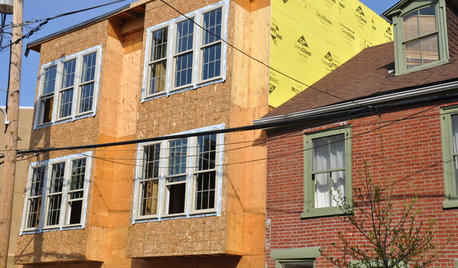Help and suggestions please! Totally confused newbie!
jjaazzy
12 years ago
Related Stories

GREEN BUILDINGLet’s Clear Up Some Confusion About Solar Panels
Different panel types do different things. If you want solar energy for your home, get the basics here first
Full Story
MOST POPULAR9 Real Ways You Can Help After a House Fire
Suggestions from someone who lost her home to fire — and experienced the staggering generosity of community
Full Story
DECORATING GUIDES10 Bedroom Design Ideas to Please Him and Her
Blend colors and styles to create a harmonious sanctuary for two, using these examples and tips
Full Story
EXTERIORSHelp! What Color Should I Paint My House Exterior?
Real homeowners get real help in choosing paint palettes. Bonus: 3 tips for everyone on picking exterior colors
Full Story
COLORPick-a-Paint Help: How to Create a Whole-House Color Palette
Don't be daunted. With these strategies, building a cohesive palette for your entire home is less difficult than it seems
Full Story
UNIVERSAL DESIGNMy Houzz: Universal Design Helps an 8-Year-Old Feel at Home
An innovative sensory room, wide doors and hallways, and other thoughtful design moves make this Canadian home work for the whole family
Full Story
SELLING YOUR HOUSEHelp for Selling Your Home Faster — and Maybe for More
Prep your home properly before you put it on the market. Learn what tasks are worth the money and the best pros for the jobs
Full Story
COLORPaint-Picking Help and Secrets From a Color Expert
Advice for wall and trim colors, what to always do before committing and the one paint feature you should completely ignore
Full Story
REMODELING GUIDESKey Measurements for a Dream Bedroom
Learn the dimensions that will help your bed, nightstands and other furnishings fit neatly and comfortably in the space
Full Story
WORKING WITH PROS5 Steps to Help You Hire the Right Contractor
Don't take chances on this all-important team member. Find the best general contractor for your remodel or new build by heeding this advice
Full Story






Sarkastic
homehydro
Related Professionals
Chattanooga Landscape Architects & Landscape Designers · Glendora Landscape Architects & Landscape Designers · Americus Landscape Contractors · Brandon Landscape Contractors · Cedar Hill Landscape Contractors · Chelmsford Landscape Contractors · Gainesville Landscape Contractors · Goodlettsville Landscape Contractors · Lemont Landscape Contractors · Melrose Landscape Contractors · Pleasant Prairie Landscape Contractors · Ramsey Landscape Contractors · Red Oak Landscape Contractors · Richmond Landscape Contractors · Reisterstown Landscape ContractorsjjaazzyOriginal Author
homehydro
jjaazzyOriginal Author
massimj
homehydro
grizzman
jjaazzyOriginal Author